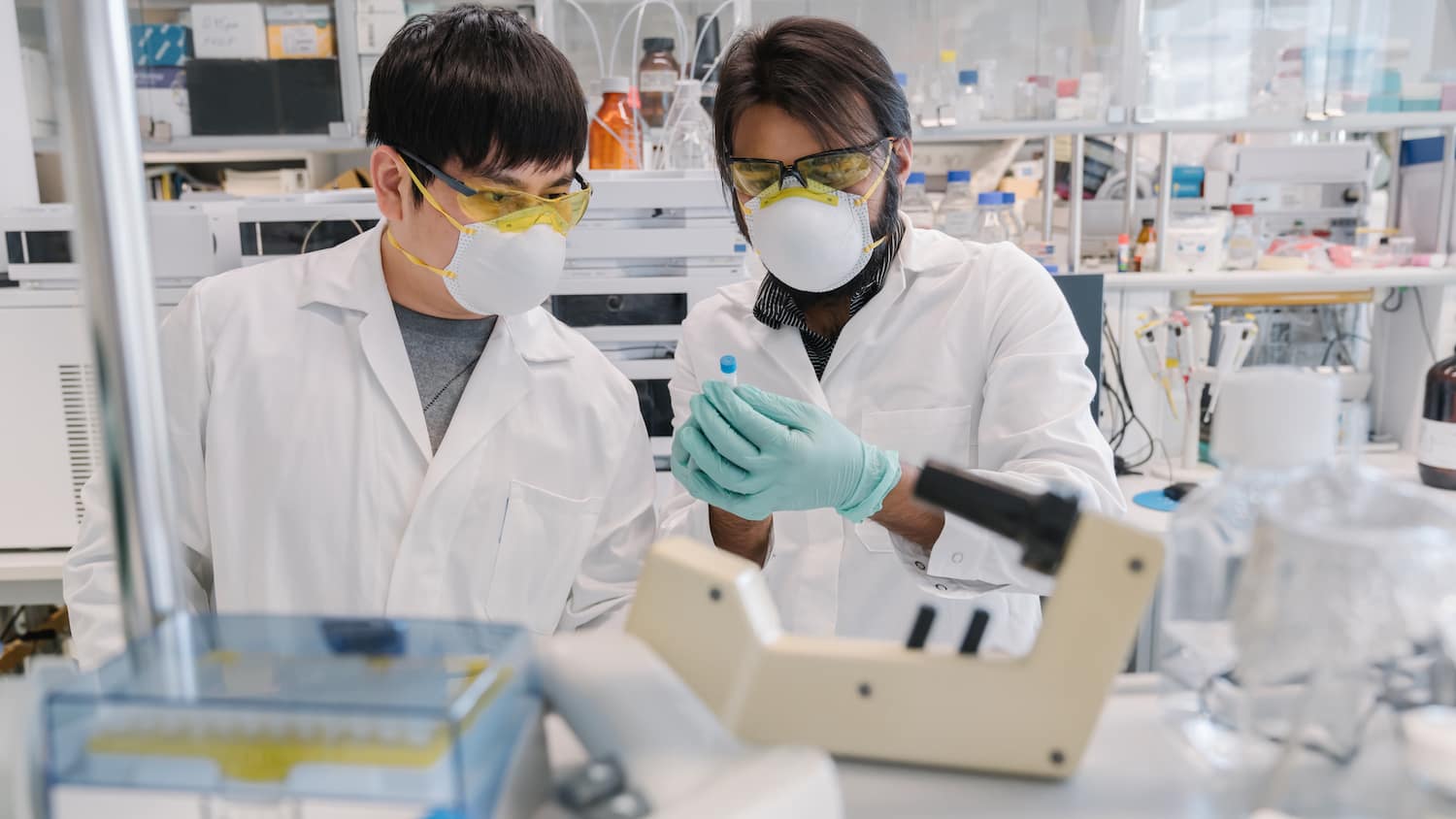By almost any measure, 2020 has been an annus horribilis that most of us are eager to put in the rear view mirror. A global pandemic, ensuing economic calamity, social unrest, and a bitterly divided political environment collided to create what has been described as the second most traumatic year in American history, behind 1968.
But, incredibly, it wasn’t all bad. In fact, there was plenty good. In the waning days of 2020, it’s worth considering how the pandemic forced major changes, innovations and breakthroughs in the way we work, learn, and live. These are changes that will have a permanent, positive impact on many aspects of our everyday lives long after the pandemic passes.
1. When forced, businesses proved they can pivot faster than they thought possible, and not just in accommodating remote work
On March 13, after the federal government declared a national state of emergency concerning COVID-19, American offices shut down, sending tens of millions of office workers to the safety of their homes. The sudden shift sent companies scrambling to make sure employees could work securely and productively from home, with reliable connectivity and the right equipment. The adjustment was remarkably swift – companies report it happened 40 times faster than they would have thought possible pre-pandemic – and successful.
According to a survey by HR and workplace benefits firm Mercer, 94% of employers said company productivity was the same or even higher than it was before the pandemic. A Gartner study found that 82% of business leaders will let employees work remotely at least some of the time when the pandemic passes, while 47% will allow permanent remote work for many employees. This is good news for employers, as studies have shown remote workers are happier, and less stressed, and stay in their jobs longer.
Will we ever go back to the offices we knew?
See why organizational psychologist Adam Grant says COVID-19 has killed open offices spaces.



2. Digital transformation at warp speed

At the same time, COVID-19 forced companies to fast track digital initiatives to meet customer demand, support remote employee needs, and to close the gap created by limited in-person interactions. The speed has been astonishing. According to a McKinsey survey, organizations accelerated the digitization of customer, supply chain, and internal operations by three-to-four years, while the share of digitally-enabled products has accelerated by what it describes as a “shocking” seven years. The survey notes that its respondents stood up solutions “much more quickly than they had thought possible” and that “most of these changes will be long lasting.” Funding for digital initiatives, it found, had increased more than costs, the number of people in tech roles, and even the number of customers.
With an urgency to do what is immediately necessary to support customers, employees and partners, organizations removed barriers to digital adoption, resulting in a huge leap at both the organizational and industry level. Witness all the retailers and restaurants that pivoted quickly to implement contactless, curbside pickup, or tech companies that drove hard to support remote workers and customers.
Two examples of these profiled on the Salesforce blog: CarMax got its contactless car-buying process, CarMax Curbside, up and running in a matter of weeks, and fintech company MX developed a custom app over a single weekend to process $5 billion in small business loans for the Paycheck Protection Program (PPP).
These and many other examples illustrate a new willingness to take risks, even among larger companies. This is a good thing for the advancement of the digital economy, and proves organizations can be more agile than they ever dreamed.
Case Study: Innovation with a customer focus
An agile culture allowed this water purification equipment manufacturer to pivot and deliver for customers in 2020.



3. The race for a COVID-19 vaccine led to a novel way to develop vaccines in general

Medical experts have run out of superlatives to describe the speed with which drug companies have developed not one but two seemingly viable COVID-19 vaccines. Vaccines typically take years to bring to market, and the sub-one year timeframe and 95% efficacy of the COVID-19 vaccines that are currently being administered have shattered the previous development record of four years set by the mumps vaccine, while far outstripping the 60-70% efficacy level typically achieved by influenza vaccines.
But the speed isn’t the only thing to feel good about. Both Pfizer and Moderna vaccines use a game-changing design called messenger RNA (mRNA), which is entirely novel, safer, and more flexible than past vaccines, and — so the scientists say — opens up the possibility of using similar designs to fight cancer, heart disease, and other infectious diseases.
“This is 21st-century science,” William Schaffner, professor of preventive medicine at Vanderbilt University School of Medicine, told the Wall Street Journal in November. As the newspaper noted, mRNA shortens development time by taking advantage of the body’s own molecular machinery, teaching cells how to make protein similar to the one found on the virus, which then triggers the body’s immune response.
While the concept of using mRNA to treat diseases has been around for a while, no mRNA-based vaccine has made it this far in trials. Now that the potential of mRNA has been revealed, many more vaccine makers will likely develop an interest in using the technique for other conditions that have vexed the medical community for years, Nick Jackson, head of programs and technology at the Coalition for Epidemic Preparedness Innovations (CEPI) told The Scientist.
“I would predict, and others have too, that this will beckon a new era for the application of mRNA towards infectious diseases, particularly as rapid response platforms to help deal with outbreaks.”
The future of vaccine management is here
Salesforce’s Work.com platform assists businesses with vaccine rollout and safety.



4. Lack of travel leads to huge drop in greenhouse gasses

The global pullback of business and leisure travel, and widespread office closures, has had an enormously positive impact on the environment. Greenhouse gasses generated by the U.S. economy will slide more than 9% this year, falling to the lowest level in at least three decades according to a study by BloombergNEF, a private researcher.
Reporting on the news, The Washington Post wrote that in 2020, “the stalled economy is projected to have generated 5.9 billion metric tons of emissions, about the same level as 1983.”
Globally, restricted human interaction with nature has also been a blessing. According to the The National Center for Biotechnology Information, reports from all over the world indicate that air and water quality have also improved, and wildlife is blooming.
In the U.S., emissions are likely to rebound next year as some people resume commuting and taking flights, but if current trends continue, 2021 emissions will also be well below pre-COVID levels, still lower than any year since 1990.
Upon release of the findings, the report’s coauthor, Thomas Rowlands-Rees, tweeted “Clearly the kind of disruption we’ve experienced this year is unsustainable. So to state the obvious, smart policy and structural change are key.”
Thankfully, it’s easier than ever for businesses to do their part, with tools that help them track and control emissions, from looking at business travel to raw materials transport and electricity consumption. Now, any organization can understand its impact and take action. As a business maneuver, this is increasingly important as consumers seek out products and brands that align with their personal values.
So while it’s unclear if Americans, encouraged by the huge and fast drop in greenhouse gas emissions, will change their behavior to continue the trend, they can take heart in knowing that real change is possible and within reach.
Sustainability at our fingertips
What you need to know to do your part to lower greenhouse gas emissions



5. Shift to remote work offers opportunity for workplace inclusion and diversity

The pandemic has caused tectonic shifts in how we work that will last far beyond 2020. As Matthew Beucher, global head of real estate design at Salesforce, said in November, “The idea that you’re going to sit at your desk for eight hours, five days a week, for most people, that’s over. “
But perhaps more important than where we work is the shift in who and how organizations hire.
Writing in Fast Company, Arthur Woods, cofounder of a diversity recruiting platform called Mathison, said that “the changed practices, cultural dynamics, and technological innovation pushed forward by the pandemic response have forced us to rewrite the playbook on work, and given leaders a unique chance to propel their diversity efforts further than they have ever seen.”
Catalyst, a nonprofit that helps global corporations build workplaces that work for women, found in a survey that seven in 10 senior leaders believe that the pandemic presents an opportunity for companies to directly address gender and racial disparities, despite studies showing the pandemic thus far has been particularly harmful for working women.
Still, with more people working from home, it’s easier for businesses to tap into diversity and inclusion in more meaningful ways. That means expanding their talent pool to areas beyond, say, the tech hotbeds of Silicon Valley and Seattle, but also creating opportunities for working parents and those with physical challenges, who would otherwise hit barriers by having to commute to and work in a specific office.
Michele Meyer-Shipp, who sits on the board of the National Organization on Disability, told Forbes, “We can reimagine the future of work as it pertains to workforce representation by tapping into untapped and under-tapped talent pools.”
Finally, Deloitte research shows that inclusive leaders demonstrate six signature traits: commitment, courage, cognizance of bias, curiosity, cultural intelligence and collaboration. “By cultivating and practicing these behaviors, leaders can foster a more inclusive workplace environment in the face of COVID, both today and in the long term.”
Diversity leads to a stronger workforce
The pandemic proved how much companies need to increase diversity and inclusion.



6. Higher education finally poised for a makeover

In March COVID-19 drove tens of thousands of college students from the classroom to their computer screens. By the fall, 4% of all college-bound students deferred enrollment rather than accept a remote learning experience (at the same price) that many considered inferior to in-person learning.
Thus, some viewed the pandemic as an opportunity to disrupt a sector they viewed in dire need of disruption — higher education. One of the most outspoken is Scott Galloway, entrepreneur, author and marketing professor at New York University. At a December Business Insider event, he noted that college tuition rates have skyrocketed (outpacing inflation and healthcare costs) and saddled graduates with years of crushing debt. Meanwhile, acceptance rates have plummeted, and the quality of education and outcomes students can expect after graduation, haven’t improved.
He and others believe there’s an opportunity for tech companies to partner with higher-ed to create experiences that give students in-demand skills at a fraction of the cost. It’s already happening, as evidenced by Grow with Google, which aims to democratize economic opportunities through free or low-cost training. IBM, Amazon and Facebook also offer programs for in-demand skills.
Ernst and Young U.K., Hilton, Penguin Random House, Apple, and Bank of America are among the many companies who don’t even require a college degree for many positions.
More broadly, there’s a sense education will evolve to become more customized and on demand, with students picking and choosing the areas of study that best suits their interests and time commitment. The concept is not unlike Salesforce Trailhead, a deep, on-demand library of Salesforce learning “trails,” or myTrailhead, which any organization can adapt to their own business.
As Rod Bristow, president, Pearson UK & Global Online Learning told us recently, we’ll see shorter courses – micro-or nano-degrees – which will weigh heavily on higher education in the future, and will ultimately result in more impactful career outcomes for a greater number of consumers.
Writing in the Atlantic, Michael D. Smith, professor of information technology and marketing at Carnegie Mellon University, said the pandemic has presented higher education leaders with a golden opportunity to rethink their mission.
“Our industry has been so stable for so long that we’ve conflated our model with our mission,” he writes. That mission, he said, should be to reach many more students, of all ages and economic backgrounds, at far lower cost.
“Once someone invests the fixed costs and creative energy necessary to create, for example, a highly-produced and engaging Intro to Computer Science course, and puts it online where anyone can access it, do we need 1,600 other people teaching Intro to Computer Science? That’s the shift we’re about to face in higher ed,” he told a Carnegie Mellon publication.
As terrifying as those changes might be, he said, “I’m convinced they will ultimately be an invigorating force for good.”
To be sure, most of us are happy to turn the page on 2020. It’s been a year unlike any other in most of our lives. But it’s worth remembering the innovation and acceleration of previously slow-moving transformations that took place during the year. These would not have happened if our resolve had not been supremely tested by the pandemic.
We’re seeing the beginning of the end of COVID-19, and offices will reopen in 2021. What’s your plan?
Learn how to manage workplace readiness and protect employee health































